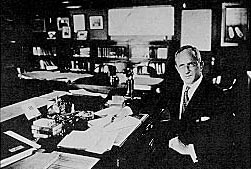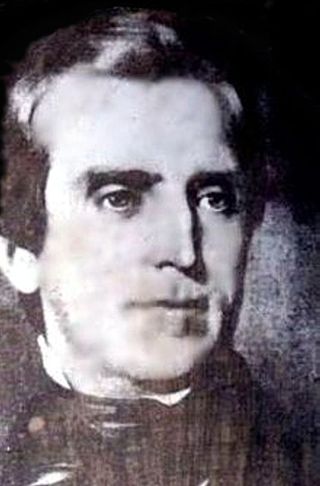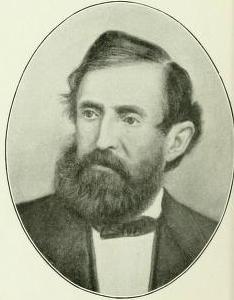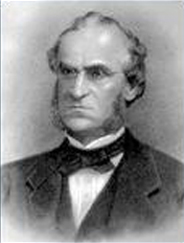
The Chicago River is a system of rivers and canals with a combined length of 156 miles (251 km) that runs through the city of Chicago, including its center. Though not especially long, the river is notable because it is one of the reasons for Chicago's geographic importance: the related Chicago Portage is a link between the Great Lakes and the Mississippi River Basin, and ultimately the Gulf of Mexico.

Clifford Milburn Holland was an American civil engineer who oversaw the construction of a number of subway and automobile tunnels in New York City, and for whom the Holland Tunnel is named.

The American Society of Civil Engineers (ASCE) is a tax-exempt professional body founded in 1852 to represent members of the civil engineering profession worldwide. Headquartered in Reston, Virginia, it is the oldest national engineering society in the United States. Its constitution was based on the older Boston Society of Civil Engineers from 1848.

The Allegheny Portage Railroad was the first railroad constructed through the Allegheny Mountains in central Pennsylvania. It operated from 1834 to 1854 as the first transportation infrastructure through the gaps of the Allegheny that connected the midwest to the eastern seaboard across the barrier range of the Allegheny Front. Approximately 36 miles (58 km) long overall, both ends connected to the Pennsylvania Canal, and the system was primarily used as a portage railway, hauling river boats and barges over the divide between the Ohio and the Susquehanna Rivers. Today, the remains of the railroad are preserved within the Allegheny Portage Railroad National Historic Site operated by the National Park Service.

The Union Canal was a towpath canal that existed in southeastern Pennsylvania in the United States during the 19th century. First proposed in 1690 to connect Philadelphia with the Susquehanna River, it ran approximately 82 mi from Middletown on the Susquehanna below Harrisburg to Reading on the Schuylkill River.

The New York Tunnel Extension is a combination of railroad tunnels and approaches from New Jersey and Long Island to Pennsylvania Station in Midtown Manhattan.

Moncure Robinson was an American civil engineer, railroad planner and builder and a railroad and steamboat owner, who is considered one of America's leading Antebellum period civil engineers. He was educated at the College of William and Mary and at the Sorbonne; his most noted project was the Philadelphia & Reading Railroad.

The St. Clair Tunnel is the name for two separate rail tunnels which were built under the St. Clair River between Sarnia, Ontario and Port Huron, Michigan. The original, opened in 1891 and used until it was replaced by a new larger tunnel in 1995, was the first full-size subaqueous tunnel built in North America. It is a National Historic Landmark of the United States, and has been designated a civil engineering landmark by both US and Canadian engineering bodies.

Canvass White was an American engineer and inventor. He was chief engineer at the Delaware and Raritan Canal and he patented Rosendale cement, which became the dominant cement in the United States until 1900.
Theodore Cooper was an American civil engineer. He may be best known as consulting engineer on the Quebec Bridge that collapsed in 1907.

Benjamin Wright was an American civil engineer who was chief engineer of the Erie Canal and the Chesapeake and Ohio Canal. In 1969, the American Society of Civil Engineers declared him the "Father of American Civil Engineering".

William Milnor Roberts was an American civil engineer. Roberts was one of the most prolific and prominent civil engineer of his generation in the United States. As a young civil engineer, he was involved in the construction of the Eads Bridge, held the title of the chief engineer of Northern Pacific Railroad, and was president of the American Society of Civil Engineers scarcely two decades after its founding,

William J. Wilgus (1865–1949) was an American civil engineer. In 1902 he was responsible for the design and construction of New York City's Grand Central Terminal. Wilgus coined the term "taking wealth from the air" from his idea to lease the area above the Park Avenue Tunnel in order to help finance the station. This is based on the legal concept known as air rights. He is also credited with the double-stacked track design of the station, that greatly increased its capacity. During the First World War, Wilgus served as the American Expeditionary Force chief of logistics and rail transport.

Alfred Wingate Craven was a chief engineer of the Croton Aqueduct Department, was a founding member—and host of its initial meeting—of the American Society of Civil Engineers and Architects, which later became the American Society of Civil Engineers (ASCE).

Ellis Sylvester Chesbrough (1813–1886) was an engineer credited with the design of the Chicago sewer system, which are sometimes known as the 'Chesbrough sewers'. This was the first comprehensive sewer system in the United States. He is responsible for the plan to raise Chicago, construction of the first water crib in Chicago, and designing the Boston water distribution system. The water system he designed for Chicago is on the National Register of Historic Places and has been designated a Historical Civil Engineering Landmark by the American Society of Civil Engineers.

James Laurie was a prominent American engineer and one of the founders of American Society of Civil Engineers (ASCE). He performed surveying, bridge design, and route design for a number of railroads in New England.

William Ezra Worthen was a Harvard-educated American civil engineer. He was President of the American Society of Civil Engineers in 1887, and elected an Honorary Member in 1898.

Max Joseph Becker was a German-born American civil engineer who served as a railroad and civil engineer. He was president of the American Society of Civil Engineers in 1889, and the president of the Engineers' Society of Western Pennsylvania in 1893.

Ashbel Welch (1809–1882) was a prominent American civil engineer and a president of the American Society of Civil Engineers (ASCE) in 1882.


















